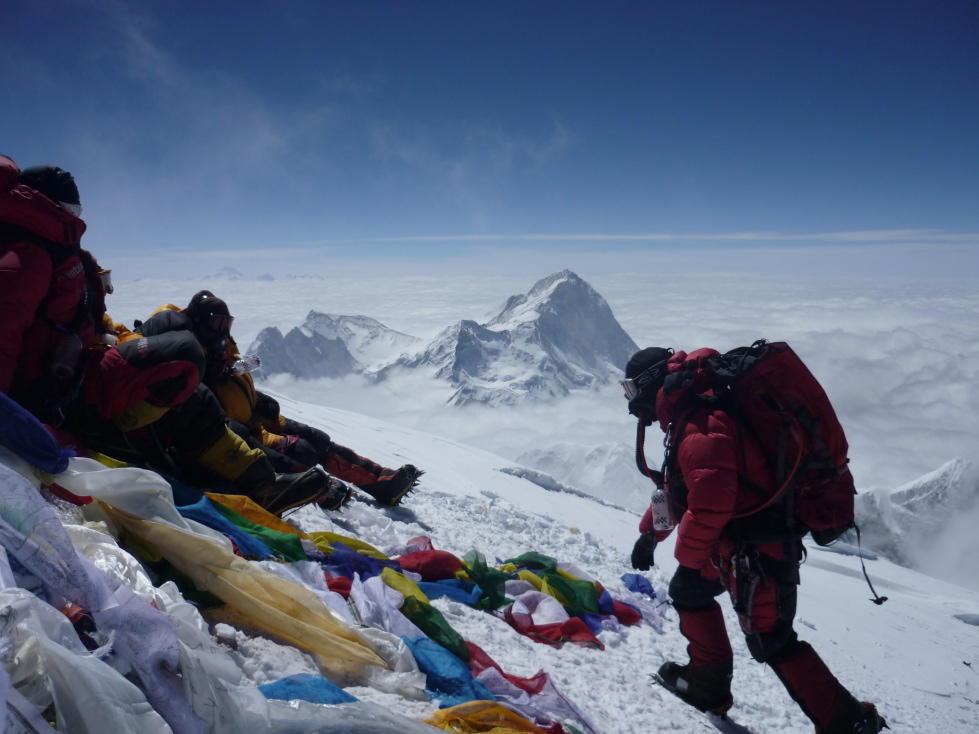
Climbing at Extreme Altitude
TIPS FOR HIGH ALTITUDE CLIMBING
Climbing to the world’s tallest places present both extreme physical and mental challenges. Here are a few quick tips on what to expect at life above 5500m and how to cope.
THE PHYSIOLOGICAL PROBLEM OF HIGH-ALTITUDE EXPEDITIONS
The amount of oxygen in air decreases linearly with ascent and very approximately there is about half of sea level oxygen present at 5500m. This falls to roughly one third at the summit of Everest. It is important to appreciate that the partial pressure of oxygen at the summit of Everest is very close to the limits at which human beings can survive at all. Permanent human habitation ceases – due to lack of oxygen, not terrain – above 5400m. Whilst acclimatised man can survive for several weeks or months at 6000m, deterioration is taking place steadily, by the apparent reversal of the very process of acclimatisation that has enabled ascent possible to these altitudes.
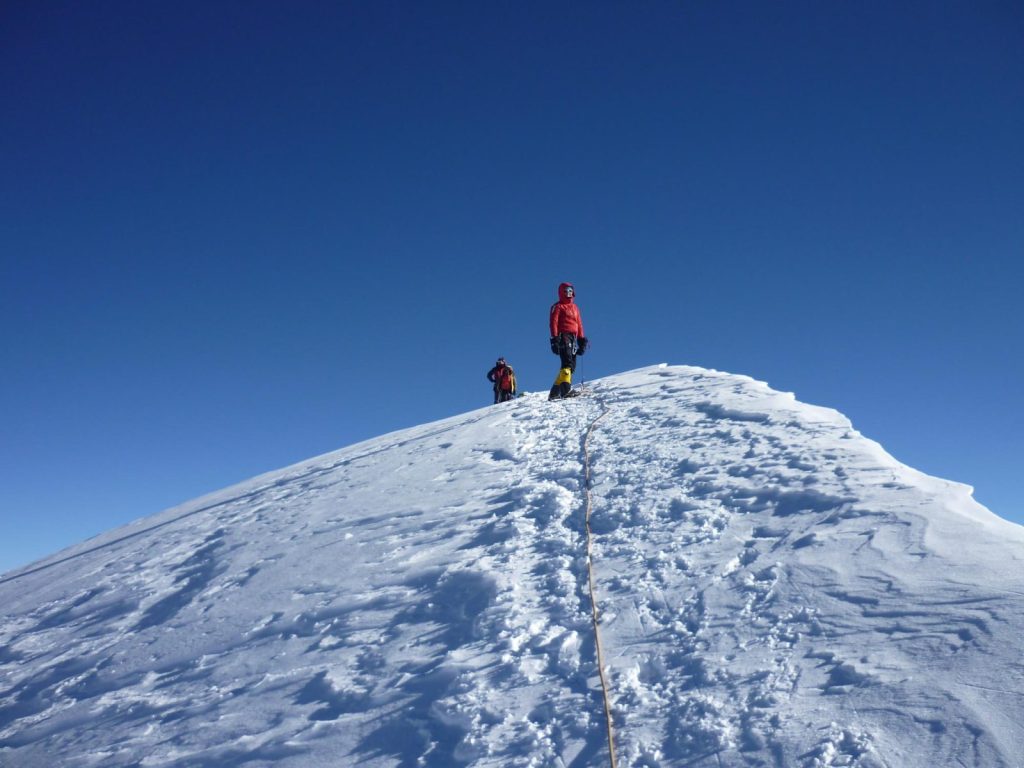
Mera Peak, one of Nepal’s Trekking Peaks, allows you to catch a glimpse at life about 6,000m.
MOUNTAIN LOGISTICS, ALTITUDE AND ACCLIMATISATION
Going above 7000 metres is a unique experience. The success of an expedition is a lot to do with the team adhering to an accepted general philosophy regarding issues of acclimatisation and mountain logistics with respect to health and safety.
In mountaineering, much that happens and many decisions depend on factors such as weather and conditions on the route. The most important individual responsibility on an expedition is balancing personal needs so you maintain your strength and health while still performing in accord with the groups’ desires and objectives. Therefore it is vital to build up a good foundation of experience over the days and weeks at high altitude but not to over-stress the body.
CLIMB HIGH, SLEEP LOW
When climbing it is good to adopt the adage of climbing high and sleeping low whenever possible. At lower elevations, our bodies can recuperate from previous days of work with sleep and food. However, there is little advantage in sleeping above 21,000’ to acclimatise, since it is now accepted that above 21,000’ there is no acclimatisation, only debilitation. In a prolonged oxygen-deprived atmosphere, working to capacity, lactic acid and other waste products build up in the muscles, which produce weakness and fatigue.
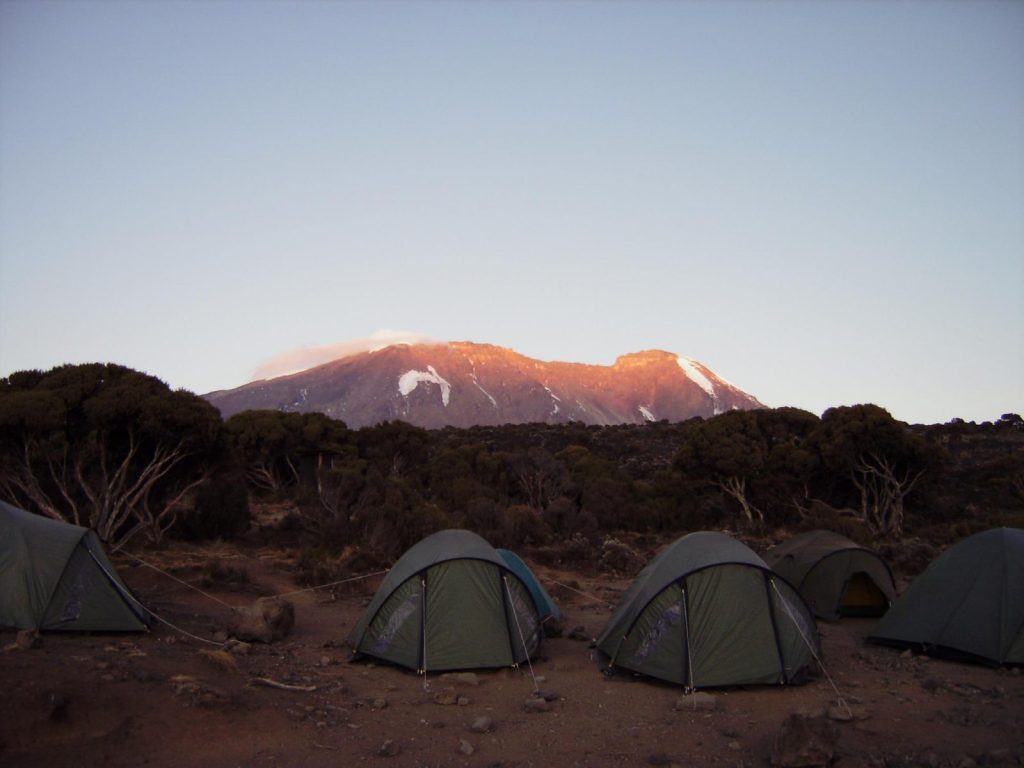
Even on lower-elevation climbs, such as Mount Kilimanjaro, it’s a good idea to climb high and sleep low.
FORCE YOURSELF TO EAT AND SLEEP
The ability to sleep after hard work is an indication of the body properly adjusting to the altitude. Difficulty falling asleep indicates the need to reduce the stress on the body and slow the rate of ascent. If you can maintain a normal pulse rate and rehabilitate by sleeping well, you should work until you feel a pleasant tiredness, even at altitude.
Sleeping and eating at high altitude, one cannot replenish the body’s energy stores or eliminate waste. Digesting complex foods at high altitude, the body actually spends energy, and many foods cannot be digested in that atmosphere. A fit body is naturally resilient and responds to rest at a lower altitude.
FIGHTING AND LISTENING TO FATIGUE
The mountaineer must listen to his or her body, to feel it intuitively. You can overcome fatigue with inner motivation early on, but too much work is unnatural and can affect resilience over a long period. Serious fatigue can go unnoticed by someone who is physically fit, and no dramatic effect from overwork will be noticed until it is too late. Fatigue subtly accumulates in the body, only to manifest itself at the most stressful moments, usually up high, leaving you without strength and the ability to perform.
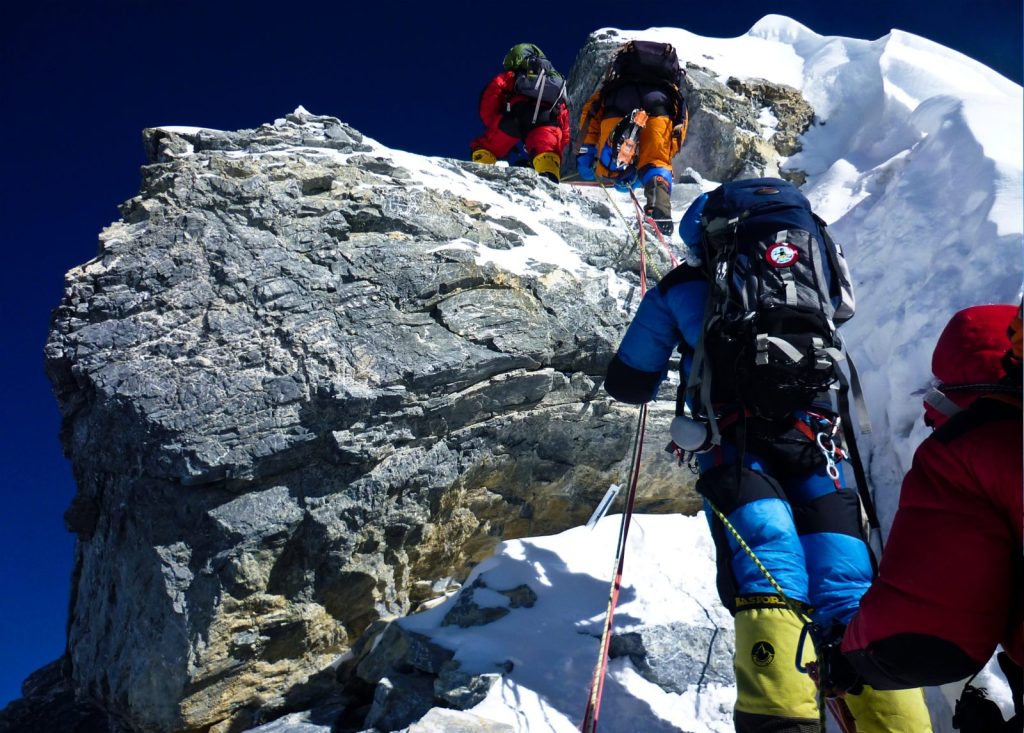
There are many health concerns when climbing big mountains, it’s important to listen to your body and understand your limits.
THE BATTLE FOR HIGH MORALE
Another important concern is morale, best kept at a high level with good food, good health, good sleep and good communication with a fairly egalitarian approach to discipline, although it will be important on the climb to adopt rigorous safety procedures. For example, always have someone else check your harness and karabiners. It is important to leave camp on any occasion in nothing other than a confident, relaxed frame of mind. Obviously, people worry about a variety of things, not least climbing an 8000-metre mountain, but if each step is tackled as a step in its own right, then confidence and enjoyment are built, earning a strong feeling of teamwork along the way.
Intake of liquid is important, especially at base camp where everyone can rehydrate at leisure. A minimum of 3 litres per day, up to 6 litres per day, is preferable. At the high camps, it is best to drink hot liquids.
ALTERNATIVE REMEDIES
It has been agreed that high altitude sickness can be reduced by tackling free radicals in the bloodstream with strong antioxidants like Glucosamine, green tea, and vitamins C, B and D. An aspirin a day also helps with thinning the blood. If you are suffering from weak knees and are worried about joint degeneration then you might try a product called Intra from a company called Lifestyles (www.1intra.co.uk). A natural vitamin product which is supposed to increase the efficient use of oxygen, whereby the red blood cells bind more of the oxygen than usual is called Geriavit Pharmaton which is available in many shops. Green Defence (www.good4you.co.uk) can help tackle the lack of fresh vegetables at high altitude.
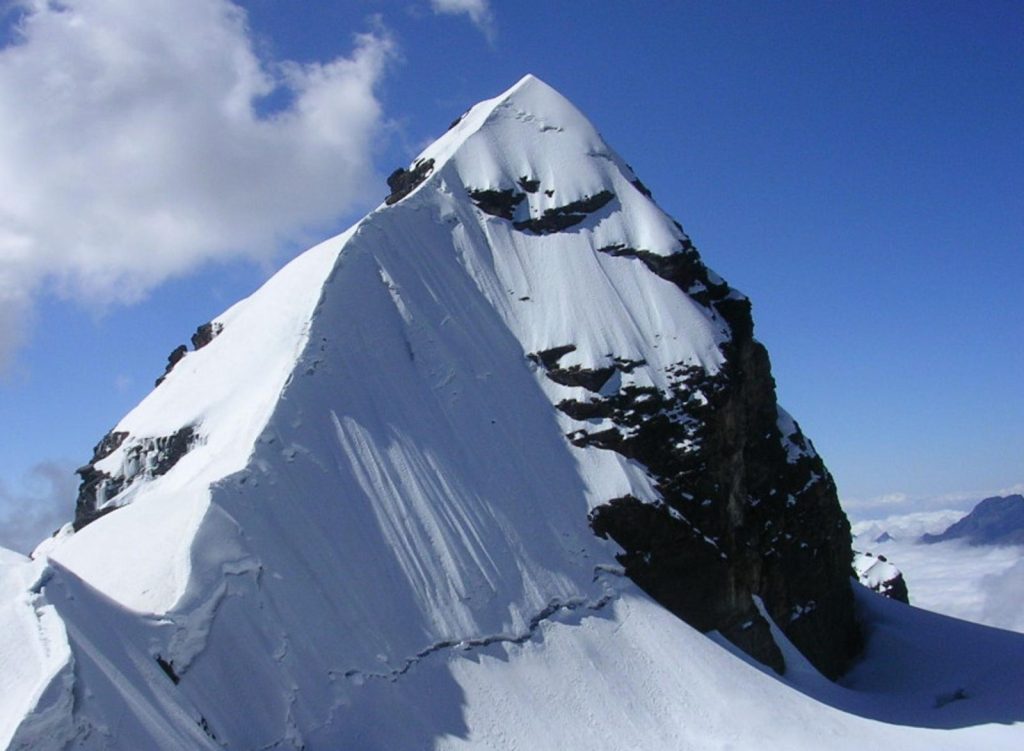
Big mountains, such as those found in the Andes, demand respect and caution.
PHYSICAL AND MENTAL EFFECTS ON PEOPLE
Around 6000m acclimatised climbers may expect to feel well, have reasonable appetites, sleep normally and be capable of carrying loads of 20-25 kilos on easy ground. Above 7000m, the situation changes: the feeling of tiredness and lethargy increases, continuous exercise becomes impossible and climbing even easy slopes becomes a painstaking, breathless achievement. Despite this, technical climbing of a high standard has been done and heavy loads have been carried at this height, though well under 20 kilos should be aimed at. Ascent rates will vary enormously depending on terrain and the climbers’ physiology, but 300-400m a day is a very reasonable achievement.
DETERIORATION OF THE BODY
Deterioration becomes increasingly apparent after several nights at 7000m. The feeling of tiredness increases and more importantly, appetite falls; even foods that were popular at lower altitudes appear tasteless and unpalatable. Weight loss is profound and lethargy also sets in, adding to the difficulties of cooking, which usually takes many hours even in ideal circumstances. Sleep becomes intermittent and due to the lack of oxygen, the cold is felt more even in the warmest of sleeping bags.
The effects of deterioration become increasingly marked after four or five days and unless trapped by weather it is advisable not to stay much above 7000m for longer periods. Recovery from high altitude deterioration is a gradual process that can only take place at altitudes well below 6000m, so base camp should be below or as near 5000m as possible.
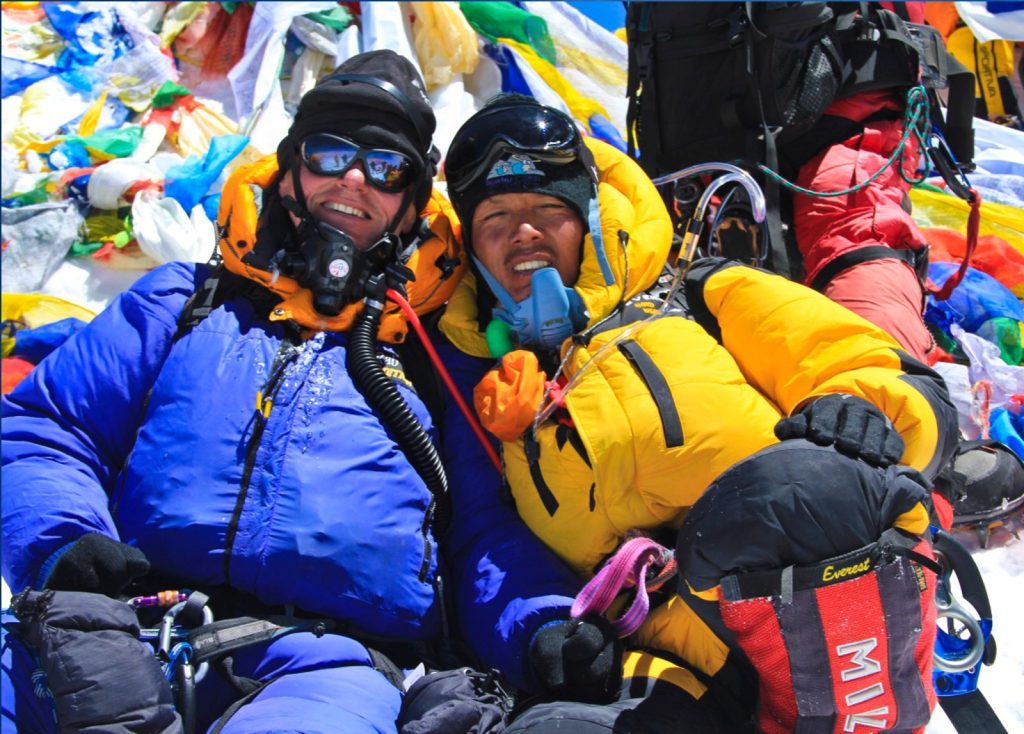
The summit of Mount Everest is hard work and you must fight just as many mental battles as physical ones.
ILLNESSES AT EXTREME ALTITUDE
Any illness at extreme altitude tends to be much more serious than at sea level. Sore throats and persistent coughing are common, a product of the dry air and cold, and notoriously difficult to treat – a silk facemask (worn as continuously as possible) helps by warming and moistening the air. Any chest infection is potentially dangerous and needs urgent treatment by descent and antibiotics, as it may be impossible to distinguish between an infection and pulmonary oedema. A number of illnesses occur as a result of prolonged exposure to extreme altitude.
Blood clots, causing pain in the calf (deep vein thrombosis), pain in the chest (pulmonary embolus), and stroke (a weakness of one arm and leg) are a product of dehydration, changes in blood clotting and extended periods lying still in a sleeping bag.
High Altitude Cerebral Oedema and Pulmonary Oedema, though seen typically between 4000-5500m during acclimatisation, do also occur suddenly at extreme altitudes in well-acclimatised climbers. Cerebral oedema and stroke (e.g. weakness of one side of the body) may come on suddenly and be confused with simple exhaustion, dehydration or hypothermia.
Mental changes are frequent – the feeling of apathy is coupled with mood changes, despair or undue elation and sometimes unreasonableness in an argument. Recent memory is impaired above 7000m.
It is most important to recognise these effects and to bear in mind that they may be made worse by many depressant drugs, such as sleeping pills – though these seem quite safe at lower altitudes.
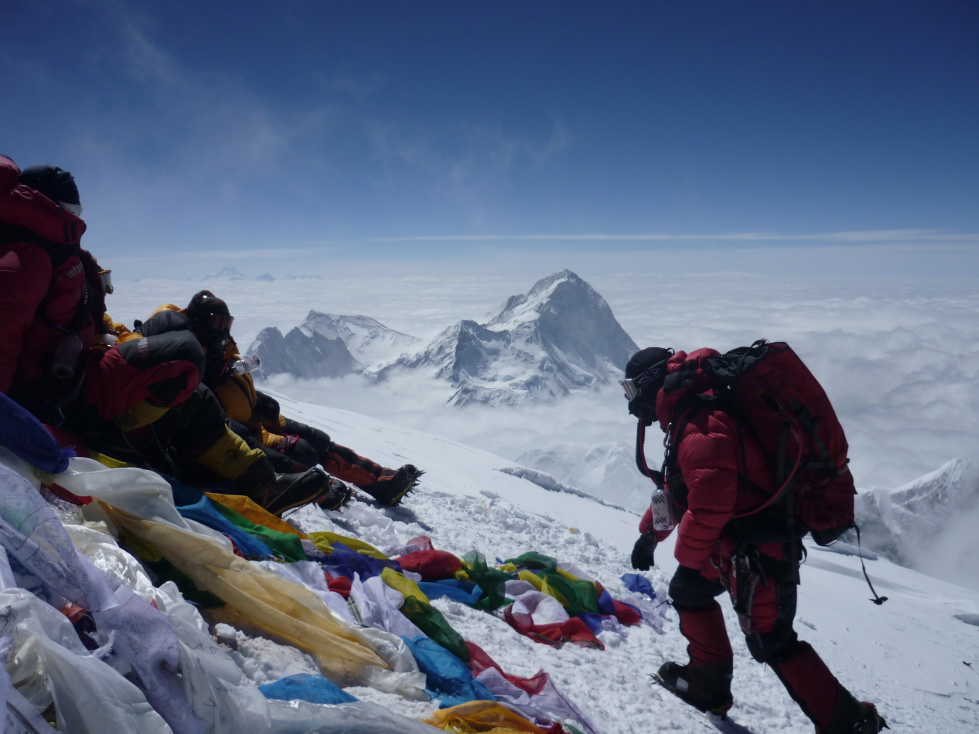
Staying healthy, clean and warm is essential for a successful summit bid.
COLD, WASHING, DEFECATION, BOOTS, FROSTBITE & COOKING
The effects of cold are more pronounced at great heights for a variety of reasons. Firstly, it is colder with a summer night temperature of -25°C common at 7000m. High winds with speeds in excess of 160kph (100 mph) are frequent, and lack of oxygen depresses the body’s own heat production. Fourthly, apathy and fatigue contribute to carelessness – you must constantly think about how to keep yourself warm!
Facemasks, one-piece down suits, windproof suits, waterproof/breathable coverings for sleeping bags and clothing have revolutionised the high altitude wardrobe. Advice from well-established manufacturers should be sought early in planning, as much of the gear has to be specially made and fitted. Plastic double boots, being extremely light, are the norm at altitude – their one problem is moisture generated by sweating: spare inners and socks, and homemade closed cell foam insoles are worth thinking about. ‘Plastic boot disease’ (white, discoloured, swollen feet) is difficult to deal with – the only solution is to allow the feet to dry out.
Washing is obviously unheard of but boiling all water (though it only boils at 77°C at 7000m) helps to cut down diarrhoea from bowel infections. Pee bottles (with a funnel for women) are vital (a half litre size is usually adequate, but not always). Defecation is difficult, but various suits with appropriate zips are available: thought should be given to the design of underclothes to make sure they can be used with this system.
Frostbite is usually a product of several factors and it is frequently avoidable. Since one’s appreciation of the degree of cold is very poor in temperatures below -15°C, it’s worthwhile carrying a miniature plastic encased thermometer (they weigh only a few grams. The occurrence of frostbite almost always means the end of any serious climbing for the victim on the current expedition and much extra work for colleagues. Drugs are of little use.
Cooking is a boring and time-consuming chore: reliable stoves are vital and although Primus, MSR or other liquid fuel stoves work well at extreme altitude they require care in operation and are fiddly to maintain. Butane-propane mix stoves are quick, easy to use and safer, but problems with fuel availability are sometimes encountered.
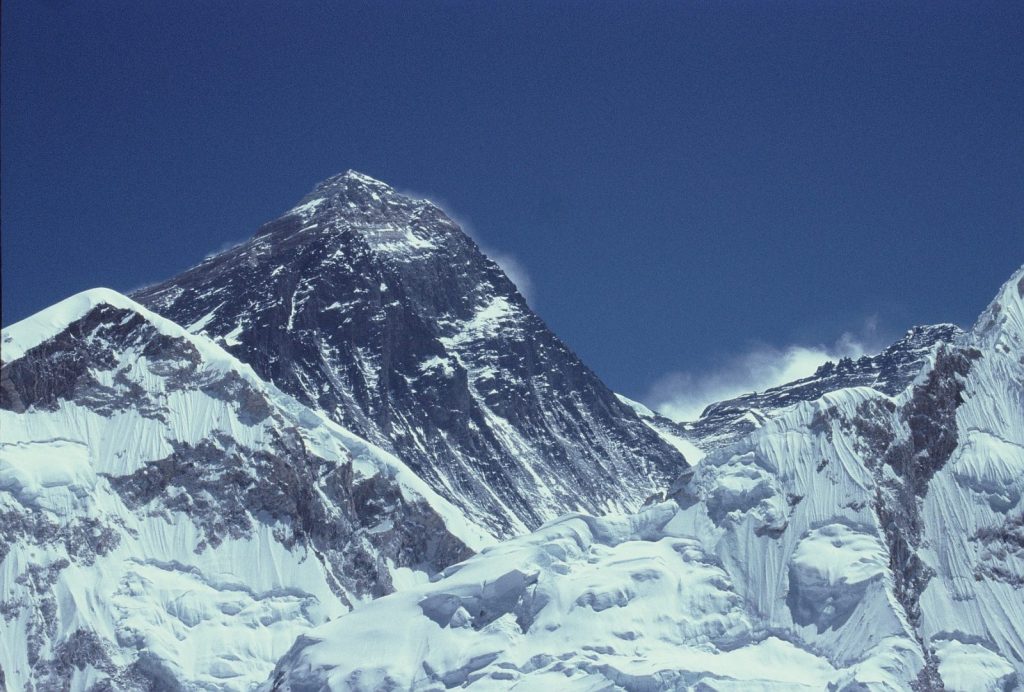
The steep, unforgiving peaks of the Himalaya have wowed and challenged mountaineers for decades.
Unfortunately, no one has yet designed a palatable high altitude diet: dehydrated food is usually rejected after a few days, and despite its weight some people favour the foil packed ready cooked meals which require heating only. Vegetarian foods – porridge, pasta, cooked rice, dahl or beans are popular in contrast to high-calorie fatty meats such as smoked ham, salamis and the tinned meats that are popular at lower altitudes. There is such wide variation between individuals that no firm rules can be made. In any case provide ample quantities of fuel for snow melts and ample sugar: an ideal fluid intake of 3 litres or more per man per day should be aimed at. The only real nutrition issues are fluids and calories.
TENTS AND SNOW HOLES
Modern tents have revolutionised high altitude camping. Specially designed box tents have also added to the repertoire of those trying to solve the high altitude accommodation problem, but they are heavy. Snow holes and igloos provide shelter from wind, noise and snow and are often preferable.\
DRUGS AND “BRAIN DAMAGE”
No drugs have shown to be of use in preventing the deterioration that occurs at extreme altitudes. Diamox (acetazolamide), which is useful in the prevention of AMS at 4000-5500m, has not been shown to alter performance above 7000 metres. Despite some popular opinion, vitamin E, garlic, marijuana or alcohol are not known to help or hinder. Amphetamines and other stimulants are strongly discouraged, as are sleeping pills such as Temazepam.
The possible long-term effects of climbing at extremely high altitude have attracted much publicity. Whilst severe lack of oxygen undoubtedly causes damage to the nerve cells in the brain, there is no clinical evidence of “brain damage” or intellectual impairment in the many climbers who have spent time over 7000 metres. The main danger in climbing the highest peaks in the world lies in death by accident or unrecognised illness – usually a combination of the snow conditions, cold and the effects of lack of oxygen.
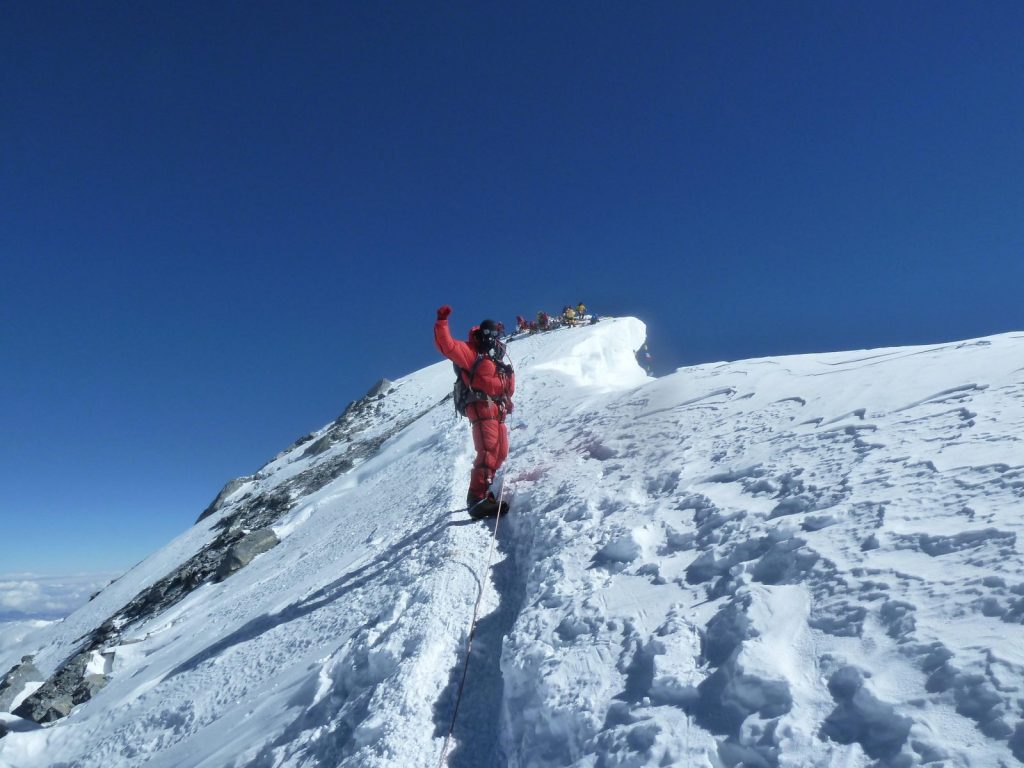
Climbers often require bottled oxygen to reach the top of the world.
CONCLUSIONS
There is no way to completely prevent the ill effects of extreme altitudes. The rules are: –
a) To be well acclimatised to around 6500m.
b) To keep well hydrated by drinking over 3 litres per day.
c) To stay above 7000m for as short a time as possible.
d) To think about the effects of wind/cold and make camps and caves as snug as possible.
e) To descend if unwell even with apparently minor illness.
f) To take rest periods as low as possible, certainly below 5500 metres.
Book Your Adventure of a Lifetime Now
Discover our trips to other Countries
Adventure Alternative Articles
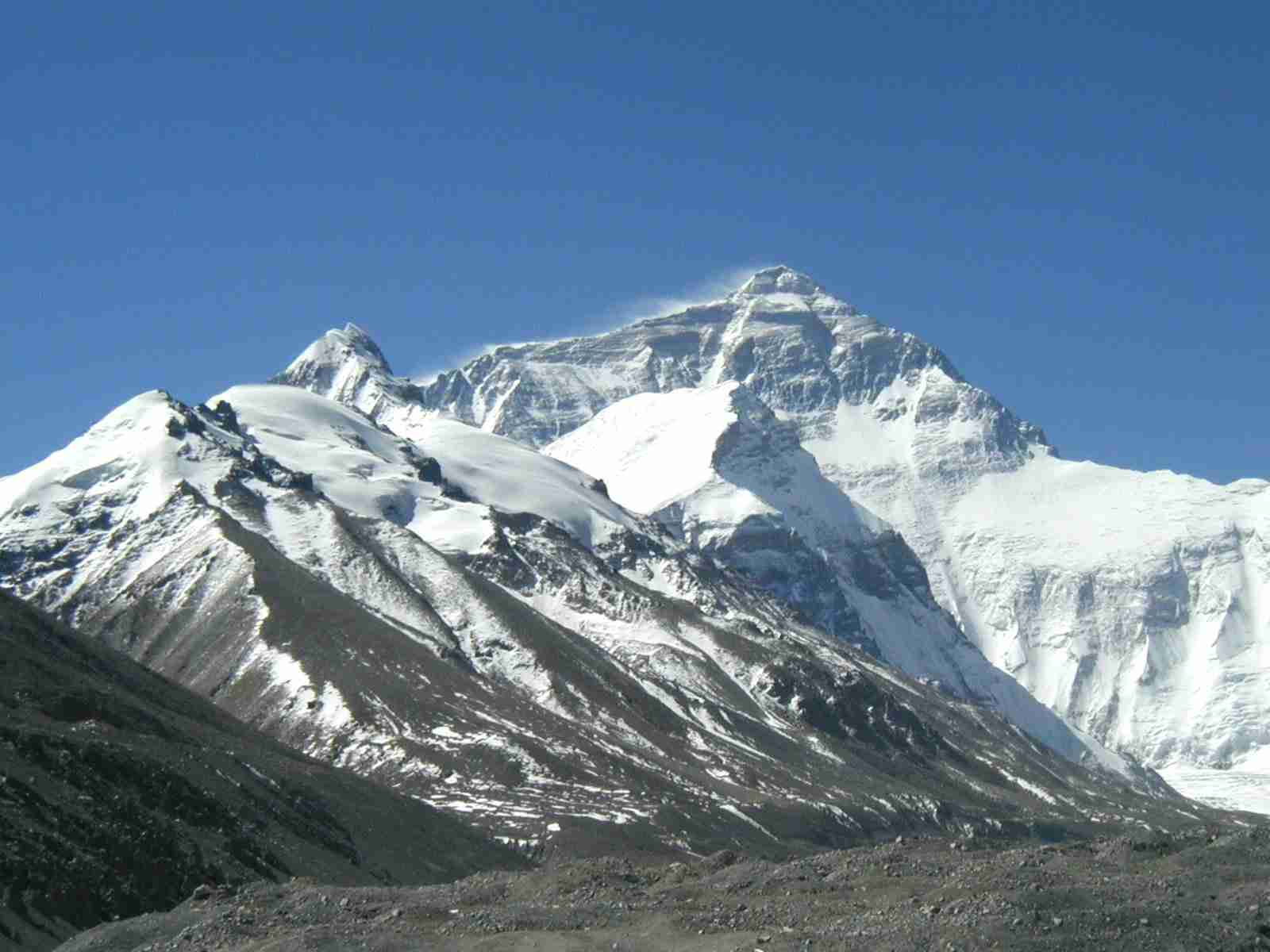
12 MONTHS, 12 MOUNTAINS
Climbing Calendar Ready for World Mountain Day In celebration of World Mountain Day, we've created a calendar for the year to make it easy for...
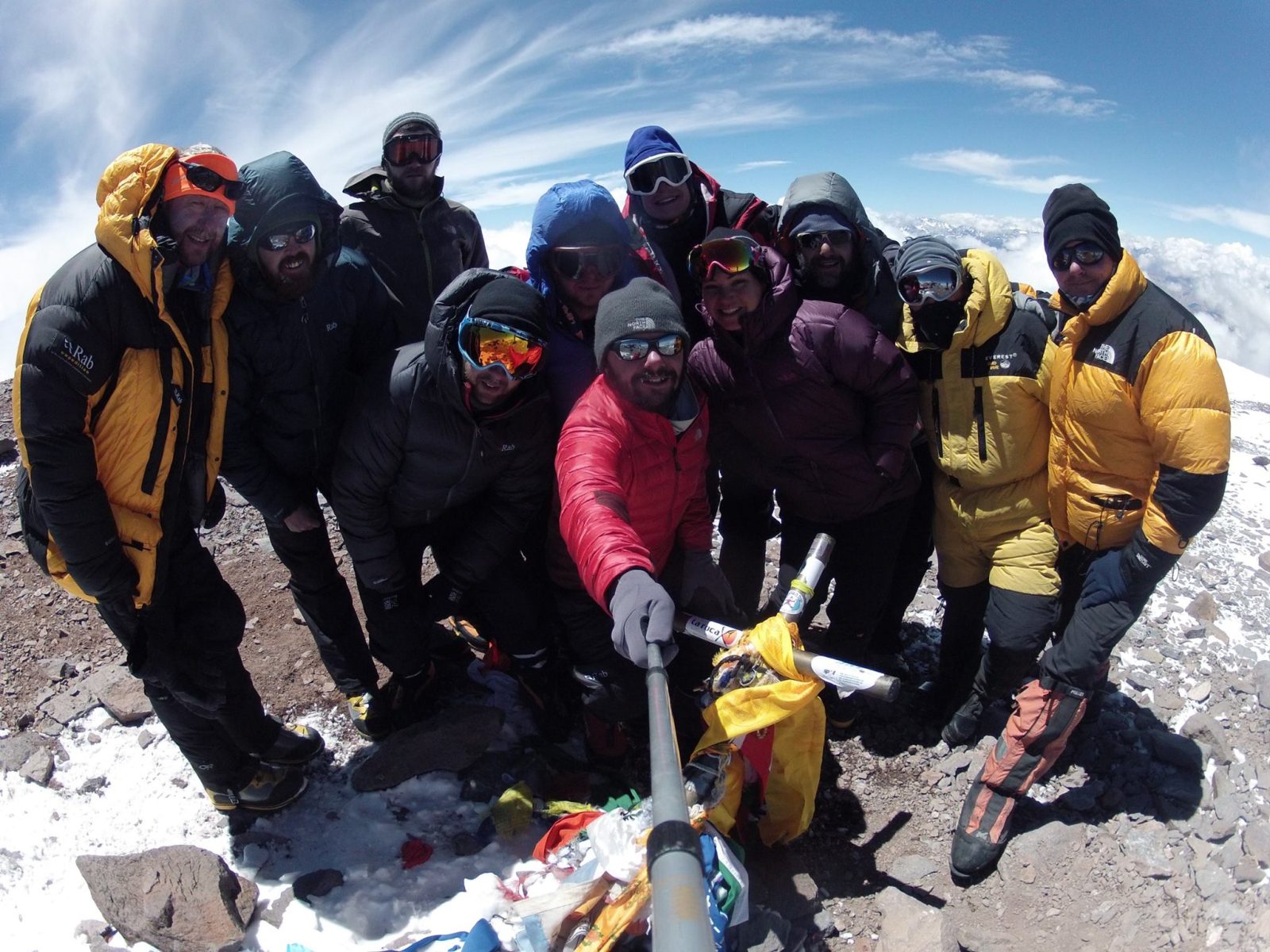
Mount Aconcagua Trip Review
January 2016 This year we had a team of twelve clients from four different countries – Iran, Ireland, England, South Africa and Argentina –...
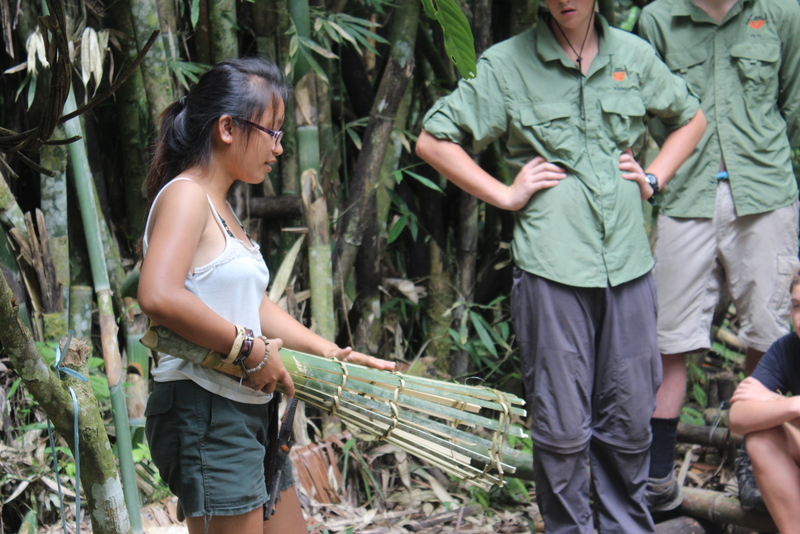
Alcey’s Survival Skills Course at Lupa Masa Jungle Camp
SURVIVAL SKILLS COURSE AT LUPA MASA JUNGLE CAMP | ADVENTURE ALTERNATIVE In celebration of International Rural Women’s Day, we’re talking...